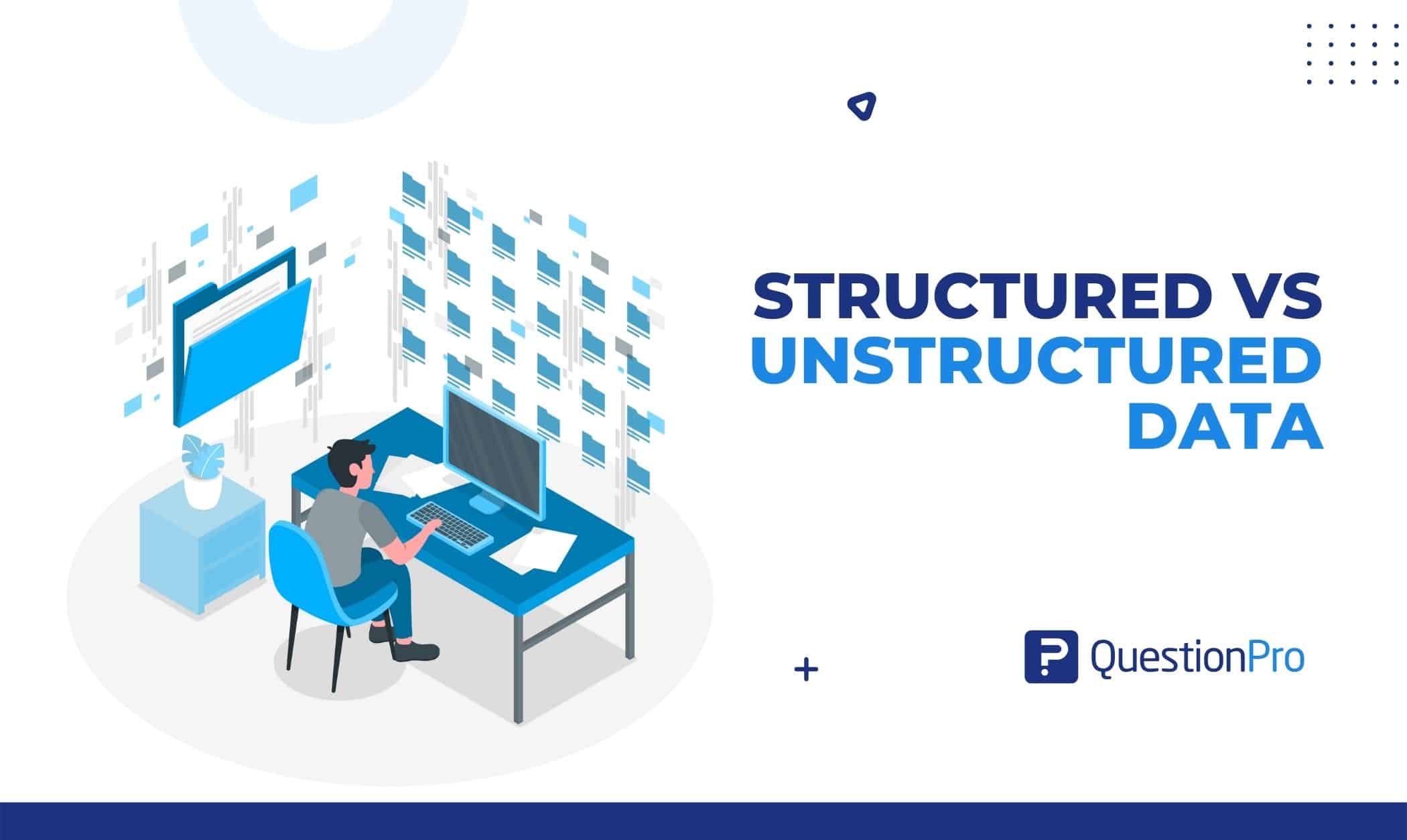
Let’s discuss the difference between Structured vs Unstructured Data. There is no uniform standard for all data. A small portion of the data is structured, whereas the vast majority is unstructured. Different databases are used for storing structured and unstructured data because of the differences in how each is gathered, analyzed, and scaled.
Big data is an umbrella term for both structured and unstructured data. Even though all kinds of data can give you great insights, it’s essential to know which ones to collect and when and which to look at to get the knowledge and understanding you want.
This post will explore both types to help you get the most out of your data. First, let’s look at structured data.
What is structured data?
Structured data refers to data that has been formatted to meet a predetermined structure. It is simpler to use, and its structure makes searches quicker. The relational database is the best illustration of structured data. There are many sources of structured data, some of which include the ones listed below:
- Databases that use SQL
- Spreadsheet programs like Microsoft Excel
- Web servers and the network’s logs
- Medical devices
- Tags or sensors like RFID or GPS
- Online form
- OLTP system, or online transaction processing
Pros and cons of structured data
There are advantages and disadvantages of using structured data to consider. Let’s discuss some pros and cons:
Pros
- Structured data is more manageable and takes less processing than unstructured data, making it easier to maintain.
- The distinctive and well-organized structured data design makes it straightforward for ML algorithms to employ.
- Using structured data doesn’t require a deep understanding of data types and how they work. If users understand the data’s subject, they can access and analyze it readily.
- More technologies support structured data, making consumption, management, and analysis easier.
- Structured data helps search engines identify and understand a website’s content.
Cons
- Because structured data has a set format, it is used for the intended purposes. This organizational structure constrains the variety and uses cases.
- Data warehouses are designed to decrease storage space. However, they are difficult to adjust and lack scalability and adaptability for new applications.
LEARN ABOUT: Structured Question & Structured Questionnaire
What is unstructured data?
Unstructured data cannot be processed or evaluated using traditional data tools and methodologies. Unstructured data functions best with non-relational (NoSQL) databases because it lacks a predetermined data model. Another method for managing unstructured data is to store it in its raw form in data storage.
Unstructured data includes various formats and sources, such as documents, webpages, conversations, videos, photos, feedback responses, and many others. Unstructured data has a number of the following characteristics:
- Data lacks a well-defined structure.
- It is challenging for computer programs to use since there is no obvious structure.
- The rows and columns used in databases cannot be used to store data.
- Data is not organized and does not relate to a model.
- Data doesn’t have a set structure or sequence.
Pros and cons of unstructured data
When employing unstructured data, one must take into consideration both its benefits and its drawbacks. Let’s discuss some pros and cons of this data type:
Pros
- Unstructured data remains undefined until needed. Its versatility boosts file formats in the database, widening the data pool and allowing data scientists to prepare and evaluate only the needed data.
- The data may be obtained rapidly and without much hassle, because there is no need to specify it in advance.
- Enables massive storage with pay-as-you-go pricing, improving cost efficiency and facilitating expansion.
Cons
- Unstructured data requires data science expertise due to its undefined/non-formatted nature. This helps data analysts but alienates business customers who don’t comprehend specific data issues or how to use their data.
- Unstructured data requires specialized tools to process, which narrows the range of options available to data managers regarding products.
Differences between structured vs unstructured data
Several key distinctions between structured and unstructured data should be considered when working with any data kind. Let’s examine some of the main areas of difference:
| Structured Data | Unstructured Data |
| Structured data is made up of numbers and values and is a type of quantitative data. | Unstructured data is qualitative data that includes text, audio, video, sensors, descriptions, and other types of information. |
| Structured data is essential to the process of machine learning and drives the algorithms that support it. | Unstructured data is used in the analysis of natural language and text mining. |
| Structured data is kept in table formats like SQL databases or Excel sheets. | Audio and video files and NoSQL databases are used to store the content. |
| A pre-established data model exists for structured data. | A pre-established data model does not exist for unstructured data. |
| Online forms, GPS sensors, network logs, web server logs, OLTP systems, and other sources provide structured data. | Email communications, word processing papers, PDF files, and other types of data are unstructured data sources. |
| Data warehouses are storage facilities for these data. | Data lakes are used to store data in its natural form. |
| It is very scalable and has little storage space. | It is challenging to scale and needs more storage capacity. |
| The typical business user can use structured data. | Accurate business intelligence can only be obtained from unstructured data by experts in data science. |
Conclusion
It doesn’t matter if you’re a seasoned data expert or a newbie business owner; being able to handle all different kinds of data is essential to your success. You will be able to carry out optimal data management, which will eventually benefit your goal if you use structured vs unstructured data possibilities.
QuestionPro is more than just survey software because it answers problems in every field. Moreover, we offer systems like the InsightsHub library for managing data.
InsightsHub is one example of the knowledge management system used by businesses worldwide to improve data management, shorten the time it takes to acquire insights, and increase historical data usage to cut costs and increase return on investment. Test out QuestionPro Right Away!







